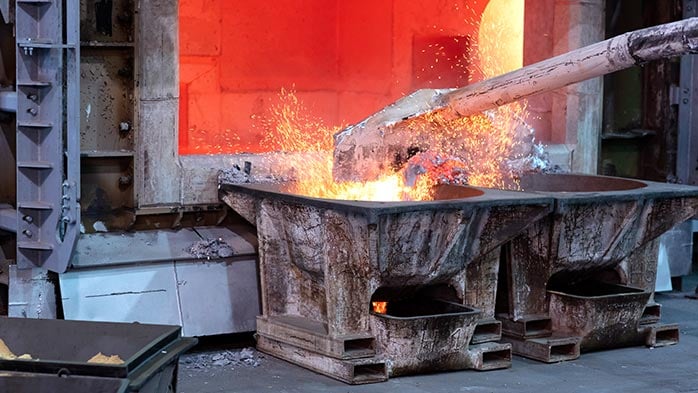CRU expects a near universal, year-on-year-average fall in commodity prices in 2023 as the global economic outlook remains bleak. Expectations of recession in Europe and the US, lingering high inflation, continued disruption in China and growing demand destruction for fertilisers drove prices down in 2022 H2 and will continue to drag on prices in 2023.
Commodity prices to decline year-on-year in 2023
While most commodity prices experienced significant falls in 2022, CRU expects a continued, year-on-year decrease in prices in 2023 as downside price risks continue to drag prices down from the historic highs seen in 2021 H2 and 2022 H1. Prices are, however, expected to broadly stabilise by 2025, following a smaller decrease in 2024, as longer-term factors such as the green energy transition, electrification and economic recovery from likely recessions in 2023 boost commodity demand.
Fertiliser price basket will fall precipitously in 2023
CRU’s fertiliser price basket is forecast to fall by 31.8% compared to 16.9% for raw materials, 16.7% for metals and 2.9% for precious metals.
The Russian invasion of Ukraine curtailed Russian and Belarussian supply of fertilisers and key raw materials such as potash, high grade phosphate rock and natural gas. This supply reduction, and subsequent raw materials price hike from other producers, raised the cost of fertiliser production in 2022, resulting in historically high price levels. These price levels have, however, proved to be untenable to most consumers, with demand destruction in 2022 H2 expected to continue into 2023.
Other commodity baskets are not expected to fall as far in 2023. However, many fell further in 2022 than fertilisers. Steel and steelmaking raw materials are thought to be reaching their price trough after steep price declines in 2022 H2. Steel prices in many regions have reached the cost floor, resulting in production curtailments that, alongside a potential revival in Chinese demand, are expected to provide support for steel and steelmaking raw material prices in 2023.
Price declines for base metals such as copper and nickel are also thought to be slowing with producer margins expected to remain relatively wide. Support has been given to these prices as markets factor in tight supply and significant future demand from the green energy transition.
Commodity prices remain elevated compared to 2019
Prices are expected to remain higher than 2019 levels in 2023 despite significant forecast price declines from recent price peaks and weak short-term demand.
These raised cost levels compared to 2019 are supported principally by the higher costs of production and issues with supply that remain in many markets following the Covid-19 pandemic. Loss of Russian raw material and energy exports, continued supply chain disruption, higher raw material prices and higher global energy prices have resulted in supply shocks and increased cost of production for many commodities. This was the case in 2021 and 2022 H1, but rampant post-Covid demand allowed producers to pass these cost increases on to the consumer in the form of higher commodity prices.
While some costs are expected to fall slightly in 2023, weaker demand for commodities is expected to pressure producer margins, narrowing them from the wide margins seen in 2021 H2 and 2022 H1. The change in producer margins varies significantly by commodity. Chinese notional steel margins were negative for the majority of 2022 following a collapse in Chinese steel demand while margins for copper and nickel producers remained wide.
West to struggle in 2023 as China and India lead growth
The economic outlook for 2023 is highly uncertain. However, CRU believes that China and India will lead GDP, IP and construction growth while economic downturn in the US and Europe will limit growth potential.
Chinese economic growth and commodity demand remained muted for much of 2022 due to disruption created by the persistent enforcement of the zero-Covid policy. In the final weeks of 2022, the Chinese government began easing zero-Covid policies. While this is likely to lead to an uptick in infections and short-term disruption in 2023 Q1, CRU believes this opens a longer-term opportunity for higher rates of growth.
In Europe and the US there are indications that inflation has peaked. However, upside risks to inflation on both sides of the Atlantic remain in 2023. The energy crisis is far from over, particularly in Europe, as tight gas markets increase the likelihood of sudden price spikes and energy cost inflation. Meanwhile, both US and European labour markets remain hot, inflating the cost of services just as goods inflation begins to cool.
Further in-depth economic analysis of China, Europe, the USA and other regions can be accessed by all subscribers in the CRU Global Economic Outlook, found here.

















